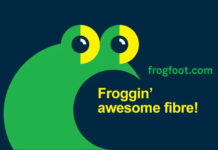
It is no longer a question of when…. the question is how?
The pandemic is rapidly changing our buying behaviour in what was already an emerging online world, and the shift is likely to stick post-pandemic. Globally, hundreds of SMME retailers will struggle to keep their doors open as government funding runs low, consumers guard their pockets, and subconscious social distancing keeps many at home.
But it’s not all bad news, the crisis also presents opportunity, as we are on the brink of an era dominated by E-commerce and exciting new technologies becoming available to do things in digital that you’ve never done before. The time for all businesses to rethink how they are telling their Brand’s story, is now.
Essentially, people are coming to terms with the realities of our interconnected world and how difficult it is to temporarily separate those connections to others. To say that we are living in unprecedented times feels like an understatement
As the lines blur between the physical and digital environment, multiple channels will become more prevalent in your customers’ path to purchase. Despite the challenges brands are facing, Kantar reports that the growth in E-commerce has not only been pushed to new heights, but there’s also been an increase in the number of retail categories that are now being purchased online for the first time since April 2020.
In markets like South Africa, which are rapidly expanding their E-commerce activities, 50% of connected shoppers believe their online purchases will increase even more, and this change is likely to be long-lasting. Having long lagged behind much of the world in terms of E-commerce, South African retailers and delivery start-ups have been doing a roaring trade online as consumers shy away from shops during the COVID-19 pandemic,
For example, global sportswear retailer, Under Armour, recently introduced a virtual shopping experience where customers can shop for gear via a Zoom video call. Customers book a virtual walkthrough with a tech specialist who will call them via Zoom and help shop for their items and sizes.
Success online in today’s hyper-competitive E-commerce landscape requires more than an attractive website, a nice product display and easy checkout. When a customer reaches your shopping cart, it’s often after he or she has encountered your brand throughout a long journey filled with multiple stops and detours.
In the past, users followed a linear path to a purchase. Consumers are becoming accustomed to mingling with companies in a multi-channel environment across multiple platforms. Captive audiences are a thing of the past, which makes brand storytelling vital to distinguishing your brand in a crowded marketplace.
Many retailers make the mistake of focusing only on the functionality of online shopping. Inventory, transactions, pricing, promotions and delivery are all critical to success, but brands often forget the importance of creating an emotional connection with customers and aligning them with the company’s selling efforts.
Linking a brand to the emotional goals of consumers is challenging, particularly when the products they sell don’t easily ignite the imagination. Instead of only focusing on the product sales, focus your energies on the end stage of the customer journey. Pay close attention to the lifestyle of the target audience. Look for stories in your customer’s needs
On the surface, there may be nothing particularly inspiring about your product, but when you listen carefully to customers, opportunities for great storytelling will emerge. One customer may like your product because it is the same one his mother used to solve a particular issue during childhood. Another shopper might be an aspiring entrepreneur who is just starting her own business. Listen carefully to your customers and discover their motivations, fears, and aspirations. By aligning your brand with what drives customers, you will find the right emotional ties to link your products with their lives.
Authenticity is key. Good storytellers should vary their approach to keep customers engaged. Simply rehashing the same story over and over can cause your brand to lose its credibility.
“Authenticity should be your primary goal in every piece of storytelling you share. Content is only productive when there is a payoff for the audience, so it must be relevant, interesting, informative or entertaining without fail. Look at each story through the eyes of your customers and assess the quality. Is there a genuine benefit? Is it repetitious? Is it relevant, interesting and authentic?”, says Yaw Dwomoh, CEO of Idea Hive, a Digital Brand Storytelling agency in Johannesburg.
Audiences are very much so “woke” (According to Urban Dictionary, “Woke” refers to being in a state of awareness: and “Being Woke” means being aware. Knowing what is going on in the community. The “woke” citizen is very aware of brands that are only interested in selling them stuff, and those brands are easily ignored. Companies that offer real value in exchange for a moment of the customer’s attention, provides a reason to come back. Hence, authenticity makes all the difference.
Successful brands understand that storytelling isn’t a marketing tactic; it’s the basis of every communication they share with the world, including the way they describe themselves online. Businesses that struggle with storytelling are often stuck in the mindset of trying to tell the world how great they are. Continual boasting on websites and online about their amazing accomplishments, bragging about the length of time they’ve been in business, and offering empty tired expressions about great service. At a time like this, this approach fails to make any real connection with customers and will be far from effective on the new E-commerce platform.
Good storytelling brands do not tell people how great their products and services are. They show them by demonstrating an acute understanding of the customer’s problems and how their products solve them. All communication – visual, verbal and written – should make it clear how your products enrich people’s lives and help them overcome challenges that stand in the way of their goals.
Good storytelling is not perfected overnight. You can only discover what works by testing your content types, analysing the results and evolving with the changing interests of consumers. “Storytelling is the key to creating an emotional bond with people online, and with it comes real brand equity. It is important to call on an agency with a 360-degree approach. We pride ourselves in getting to know exactly what will work for each individual client”, adds Dwomoh
Brands have an important role in shaping our society and they have the ability to unite the world we live in by communicating the universal truths we are well aware of. An E-commerce boom is the reality, so now is the time for brands to adjust the way things are done in the new digital era.
About Idea Hive
At Idea Hive we create and execute pioneering Brand Storytelling Solutions to illuminate your brand’s power. We apply a strategic framework which extracts and aligns all the key components of your brand’s story.
Our team of curious, creative, driven and critical thinkers mould all the elements into a cohesive Brand Storytelling Solution that will change how the mark45et sees and experiences your brand.
We craft and execute heartfelt and character-driven Brand Storytelling campaigns that position your brand/and or organisation to achieve its full market potential.
We offer an array of tailormade solutions around our services which includes branding, design, influencer marketing, visual content and communications. All solutions are anchored in ensuring that each Brand Story is told exceptionally, uniquely and to the right audience.
Imagine a world where brands defeat normal and ideas inspire change.
When we change, we change the world around us.




















































































